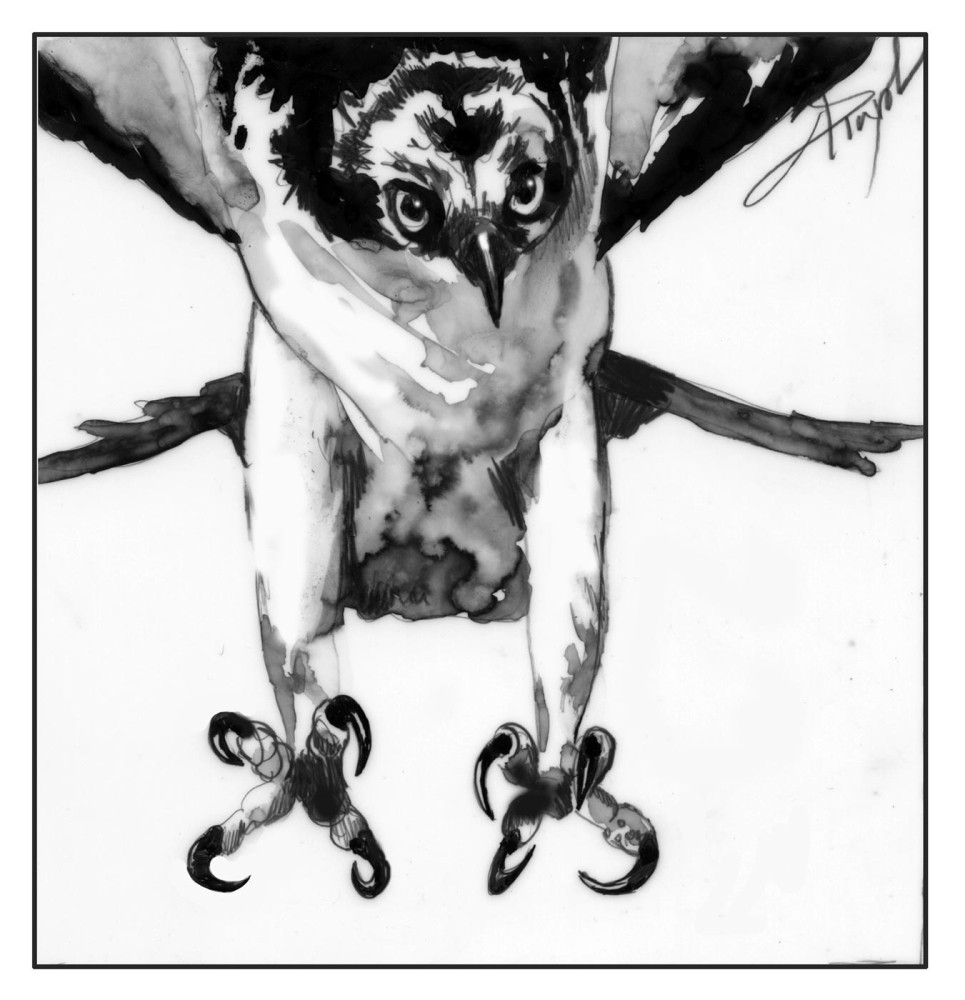
On my commute to the Northern Woodlands offices in Lyme, New Hampshire, I pass a long-established osprey nest, perched atop a very tall electric tower next to Route 302. This location offers the ospreys a view of their surroundings – and provides me with a view of the ospreys from the road. My early morning drive is brighter now, on the season’s edge, than it was in the heart of winter, and I have been craning my neck lately to get a look at the nest – and hoping to see a raptor or two perched on its edge or soaring nearby.
It’s early still, I know, for the ospreys to return, but by now they’re likely on their way, flying north from their winter homes in South America, across the Caribbean to Cuba, and from there to Florida, then along the East Coast and inland until they reach this nest. And chances are good that when I do spot the ospreys, it will be the same pair I’ve seen in past years here. Ospreys often form breeding pairs that last several years, although the male and female spend their winters separately.
“They take completely separate winter vacations, which maybe is the key to a long and successful marriage,” said Iain MacLeod, executive director of Squam Lakes Natural Science Center, who has been keeping tabs on osprey nests in New Hampshire’s Lakes Region for 25 years. “But they’ll come back to the nest year after year after year and reunite.”
Last spring, MacLeod witnessed the reunion of a pair that has been together – at least during the breeding months – for at least 15 years. The female had already arrived by the time the male returned to perform what MacLeod calls “sky dancing” – a combination of vocalizations and aerial displays of hovering and swooping.
“As he dropped down to the nest, she flew to join him. The two of them sat on the nest together. He displayed submissive posture, where he kind of turns his back and droops his wings,” MacLeod said. “They mated within 20 minutes of reuniting, and then he went off and got her a fish, which is an important part of the courtship. And within 11 days they were sitting on eggs.”
While many raptors build their nests in the shelter of overhanging branches, osprey nests tend to be high up and open to the elements – and often on manmade structures, both those intended as nesting platforms and those meant for other purposes. These nests comprise a base of large sticks, topped by smaller sticks, with a lining of grass, moss, and bark to cushion the eggs. Ospreys add to their nests each breeding season, and a nest may grow to be as large as 6 feet across and several feet deep.
In New Hampshire, pairs typically produce three eggs each spring. The female is responsible for nearly all incubation, which lasts just over a month, and for tending to and protecting the chicks once they hatch. The male spends his time catching fish for his mate and the chicks and guarding the nest from predators and intruding ospreys.
These raptors are purely fish eaters and have several adaptations for this lifestyle. Their long, narrow wings allow the birds to hover as they search for prey in the water below. They have long legs that can reach into the water and hooked talons to snatch fish. Ospreys have “zygodactyl” feet, meaning they have one reversible talon; while perched, three toes face forward, and one backward, but when they dive for a fish, the outer front toe pivots to provide a stronger grasp. Tiny barbs, called spicules, along the underside of their feet help ospreys hold slippery, wriggling fish. And if you catch a glimpse of an osprey flying with a fresh catch, look closely – the fish will be faced forward in those talons, reducing aerodynamic drag as the osprey flies.
As with many birds of prey, osprey populations were devastated by the use of DDT in the mid 20th century. Thirty years ago, when raptor biologist Chris Martin was starting out at New Hampshire Audubon, the only osprey nests in the state were in northeastern Coos County. But the fish-eating birds have thrived since then and now nest throughout the state. When biologists stopped comprehensive tracking of nests in 2010, Martin said, there were more than 175 established nests in New Hampshire.
One of those is the nest I pass, near the Ammonoosuc River and plenty of ponds and lakes for good fishing. I’m looking forward to the day, a bit later this spring, when I look up and see an osprey – or two – back for another breeding season.

